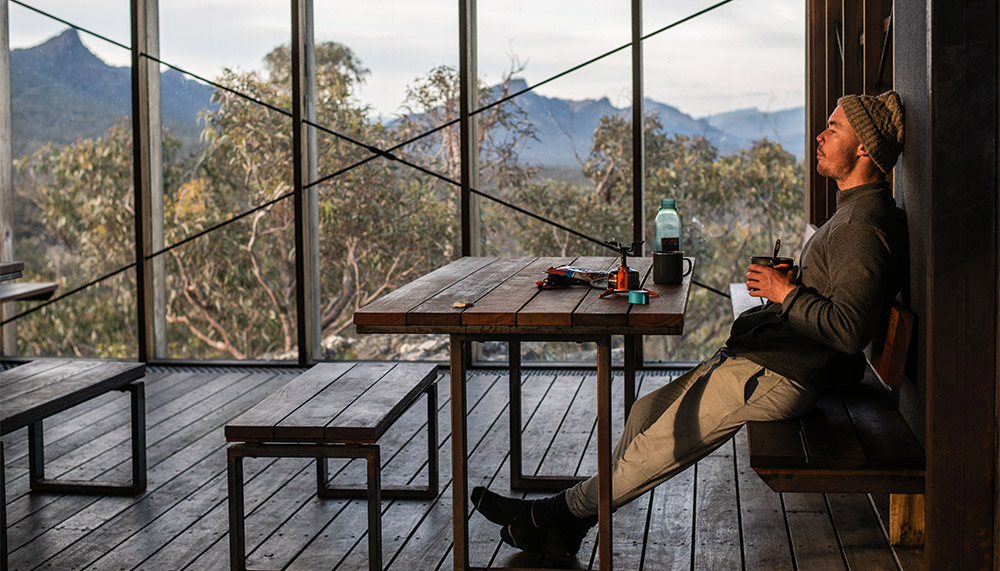The new 160km Grampians Peaks Trail traverses Victoria’s much-loved mountainous national park.
Story + Photos Ricky French
Will Burgess fixes the last tie-down chain to his tent, unfurls his sleeping bag, and clambers out to soak up the last sunset of his 13-day journey. Tent pads are scattered across a rock outcrop on the steep flanks of Mt Abrupt, at the southern end of Grampians (Gariwerd) National Park, 260km west of Melbourne. Vertical slabs of fluted sandstone tower above the tents, and a red-necked wallaby hops between tufts of flowering grevillea.
The Mud-dadjug hike-in campground is the last stop on the 160km Grampians Peaks Trail, which traverses the entire length of the Grampians from Mt Zero (Mura Mura) in the north to the town of Dunkeld in the south. With only 14km to go, tomorrow will feel like a victory lap as Will strides into Dunkeld, having completed the country’s newest multi-day hike. “It’s a surreal feeling,” Will says. “I really wasn’t sure I’d make it.”
The hiking trail was first mooted 20 years ago and was finally opened in November 2021. Operated by Parks Victoria, it cost $33 million, which was funded by state and federal governments.
The route traverses a myriad of ever-changing landscapes. After summiting Mts Stapleton and Difficult, hikers can enjoy the spoils of civilisation on the fourth day when they reach the town of Halls Gap. Then things get really tough. River crossings, remote campsites and frequent boulder scrambles make the central, alpine section the most challenging, as hikers negotiate their way over the Mt William Range (which tops out at 1168m) and Major Mitchell Plateau. Snowfalls and freezing temperatures are not uncommon in winter.
In the southern section, the range narrows to the spiny backbone of the Serra Range, punctuated by steep climbs of Signal Peak and Mt Abrupt, before spilling out into river red gum flats on the southern side of Mt Sturgeon.
The region is a hotbed of biodiversity, home to more than 975 native plant species, 80 species of mammal, reptile and amphibian, and over 200 bird species. The cultural landscape is equally captivating. More than 80% of known Aboriginal rock art shelters in Victoria are found here. Halls Gap is home to the Brambuk National Park and Cultural Centre, which offers an opportunity to connect with the Jardwadjali and Djab Wurrung peoples.
Eleven hike-in campgrounds dot the trail. Some have fully enclosed communal shelters to protect hikers from the elements, and all have toilets, water tanks and even USB charging stations.
At $48.50 per night, doing the whole trail costs over $530 (although tent pads sleep up to 2 people, so the cost is halved if you’re sharing a tent with someone). This cost hasn’t been the only criticism levelled at the new trail. Construction coincided with the closure of many of the Grampians’ long-established rock-climbing sites on cultural heritage grounds, leading to climbers feeling vilified. Others worried about the encroachment of private interests on public land. The 2 hiker huts are owned by Parks Victoria and bookable only through licenced operators.
This story excerpt is from Issue #148
Outback Magazine: April/May 2023










